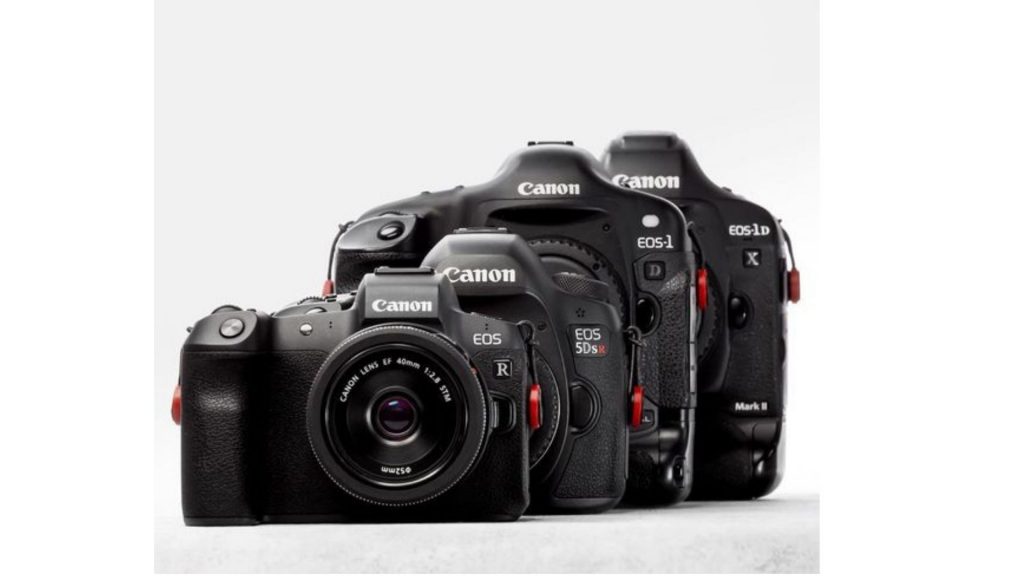Choosing the right camera can be a challenging task, especially when there are so many options on the market. As a photographer looking for the perfect balance of quality, functionality, and affordability, I spent weeks comparing different cameras before finally deciding on the Canon EOS R100.

In this article, I will explain why this camera stood out and why it became my final choice over other models. By focusing on features such as image quality, ease of use, design, and price, I’ll walk you through my decision-making process and why the Canon EOS R100 ultimately met all my needs.
Canon EOS R100
The Canon camera is an entry-level mirrorless camera, designed for beginners and enthusiasts alike. While it’s not the most feature-packed camera out there, it offers solid performance for its price, making it a great option for those looking to get serious about photography without breaking the bank. Click here to shop for this product. Below are some of the core features that made the Canon EOS R100 stand out for me.
Key Features of the Canon EOS R100
Image Quality
When it comes to photography, image quality is one of the most important factors to consider. The Canon EOS R100’s 24.2 Megapixel APS-C CMOS Sensor delivers sharp, vibrant, and detailed images. I was particularly impressed by how well the camera handled different lighting conditions, capturing beautiful photos both indoors and outdoors.
Compared to other entry-level models like the Sony Alpha a6100 and Fujifilm X-T200, the Canon EOS R100 produced more natural colors and better contrast straight out of the camera. While some cameras require heavy post-processing to get the best results, I found the Canon EOS R100’s images ready to share almost immediately.
Autofocus System
Another feature that caught my attention was the Dual Pixel Autofocus system. This technology allows the camera to quickly and accurately focus on subjects, making it ideal for a variety of shooting conditions, including action shots, portraits, and even video.
Compared to other cameras in the same price range, such as the Nikon Z50, the Canon EOS R100’s autofocus system felt faster and more reliable. For someone like me, who enjoys capturing moments on the go, having a fast and accurate autofocus system was a key reason for choosing this camera.
Video Capabilities
While photography is my main focus, I also needed a camera that could handle occasional video work. The Canon EOS R100 supports 4K video recording, which is a major plus in today’s content-driven world. Although the camera does crop the image slightly in 4K mode, the video quality remains impressive, with good detail and vibrant colors.
Compared to other cameras I considered, such as the Panasonic Lumix G7, the Canon EOS R100 offered a simpler, more user-friendly video recording experience. The menus were easy to navigate, and the quality was more than enough for casual video projects, vlogging, or even short films.
Design and Build Quality
One of the main reasons I chose the Canon EOS R100 over its competitors was its compact and lightweight design. Weighing in at just over a pound, this camera is incredibly portable, making it easy to carry around during shoots or while traveling.
While I considered other models like the Sony Alpha a6400, which also has a compact form factor, the Canon EOS R100 felt more comfortable in my hands. Its grip is well-designed, providing a secure hold even during longer shooting sessions. The build quality is solid, and the controls are well-placed, making it a joy to use.
Connectivity and Sharing
In today’s world, being able to easily share your work is crucial. The Canon EOS R100 has built-in Wi-Fi and Bluetooth, which makes transferring photos and videos to my phone or computer incredibly easy. Canon’s Camera Connect app works smoothly, allowing me to control the camera remotely and transfer files on the go.
Compared to the Fujifilm X-T200, which also has wireless connectivity, I found Canon’s system to be more intuitive and faster. This feature made the camera more convenient for me, especially when I needed to quickly share images with clients or post them online.
Comparisons to Other Options
While the Canon EOS R100 ultimately won me over, I did consider several other cameras. Here’s a breakdown of how it compares to some of the other models I evaluated:
Sony Alpha a6100
The Sony Alpha a6100 was one of the strongest contenders during my research. It offers a similar 24.2 MP APS-C sensor and is known for its fast autofocus system. However, I found the Canon EOS R100 to be more user-friendly, especially for someone transitioning from a DSLR to a mirrorless system.
Sony’s interface can be overwhelming, and its color science didn’t appeal to me as much as Canon’s. While the a6100 is certainly a strong camera, the Canon EOS R100 felt like a more comfortable and straightforward option.
Fujifilm X-T200
I’ve always loved Fujifilm’s retro design, and the Fujifilm X-T200 was another camera I seriously considered. It offers a lot of great features, including a 3.5-inch vari-angle touchscreen and excellent 4K video recording capabilities.
However, the Fujifilm X-T200 felt bulkier and slightly more complicated to use than the Canon EOS R100. While I loved the idea of experimenting with Fujifilm’s Film Simulation modes, I found the Canon EOS R100 to be more practical for my needs, especially in terms of weight and portability.
Nikon Z50
The Nikon Z50 was another mirrorless camera I evaluated. It’s a solid camera with a 20.9 MP sensor and an EXPEED 6 image processor. I appreciated Nikon’s build quality and the overall performance of the Z50.
However, the Nikon Z50 is priced slightly higher than the Canon EOS R100, and for my purposes, the extra cost didn’t justify the benefits. While the Nikon Z50 offers more advanced features, the Canon EOS R100 provided everything I needed at a lower price point.
Panasonic Lumix G7
Finally, the Panasonic Lumix G7 was a strong contender, particularly because of its video capabilities. It offers 4K videos without any crop and is well-regarded in the filmmaking community. However, as a photographer first and foremost, I prioritized still image quality over video features.
While the Lumix G7 excelled in video, I found it to be more versatile overall. Its Dual Pixel Autofocus and image quality were better suited to my needs, making it a more balanced option for both photography and casual video.
Why the Canon EOS R100 Was My Final Choice
After comparing all of these options, I ultimately chose the Canon EOS R100 because it struck the perfect balance between price, performance, and ease of use. Here’s a quick summary of why it became my final choice:
- Excellent image quality: The 24.2 MP APS-C sensor delivers sharp, detailed, and vibrant images.
- Fast and reliable autofocus: The Dual Pixel Autofocus system outperforms many competitors in this price range.
- Compact and lightweight: Its portability makes it perfect for travel and on-the-go shooting.
- Easy connectivity: Wi-Fi and Bluetooth make sharing and transferring files a breeze.
- Affordable: Compared to other mirrorless cameras with similar features, the Canon EOS R100 offers great value for its price.
Conclusion
This camera proved to be the best fit for my needs after a thorough comparison with other mirrorless cameras. Whether you’re an aspiring photographer or someone looking to upgrade from a DSLR, this camera offers a great mix of features and performance at an affordable price.
It’s easy to use, delivers stunning image quality, and is portable enough to take anywhere. If you’re in the market for a reliable and versatile camera, the Canon EOS R100 is certainly worth considering.
CHECK THESE OUT:
